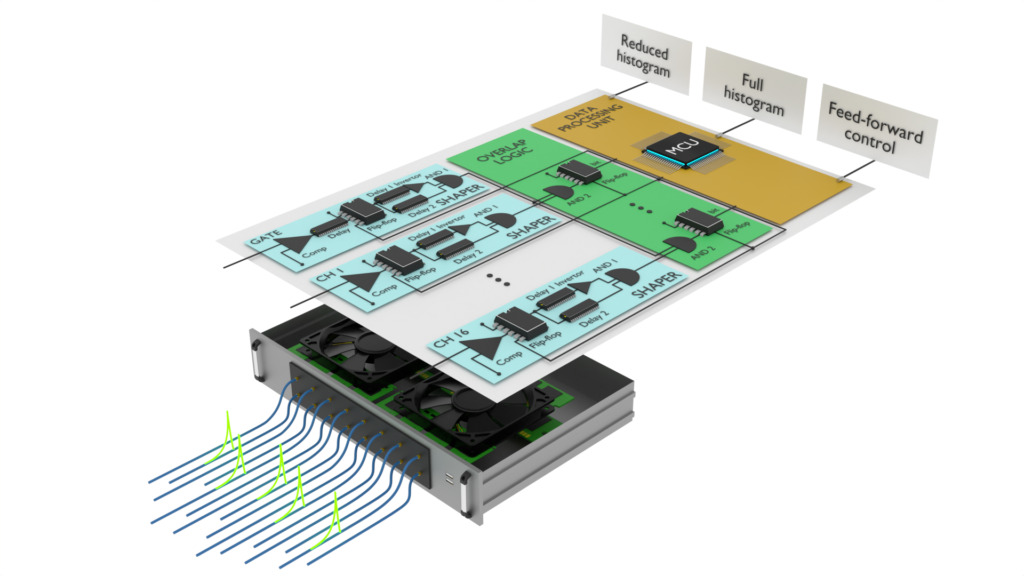Our recent result demonstrates an ultra-fast multi-channel coincidence counting unit with full channel-number resolution, which meets the requirements of cutting-edge photonic experiments. Our coincidence counting unit (CCU) enhances precision and versatility in coincidence counting and paves the way for large-scale quantum applications. The results were published in Physical Review Applied. The preprint is publicly available at arXiv:2311.08482v2.
A multi-channel CCU is an essential instrument for detecting and registering multiple coincidence events. Cutting-edge experiments commonly employ large systems with multiple detection channels whose outputs must be processed and further utilized. Coincidence analysis aids in identifying and studying photons, particles, or their interactions and enables direct control of quantum systems through feed-forward protocols. The importance of the CCU has been emphasized through numerous scientific and engineering applications, including quantum information processing and boson sampling. Additionally, emerging biomedical imaging and particle-tracking techniques, such as positron emission tomography and fluorescence correlation spectroscopy, rely on the real-time analysis of multiple photon coincidence events.

We report a high-performance 16-channel CCU designed for large-scale photonic systems. The presented CCU excels in precise coincidence counting and offers fully reconfigurable coincidence configurations. It operates in two regimes: 1. advanced events triggering for driving a feed-forward loop, and 2. classification of all possible detection events. Moreover, it can count n-fold coincidences or store the full histogram of all possible coincidence events with channel-number resolution. Our CCU provides a fine-tunable coincidence window within a sub-100 ps – 20 ns range with ten picosecond resolution and ten picoseconds overall timing jitter, ensuring a low overall coincidence error probability.
We applied the presented CCU in a multiplexed optical network experiment to directly measure the coincidence distribution required for verification of initial states of light. Furthermore, we measure and analyze photon statistics of the optical signal, namely thermal and coherent light. Our results show high-fidelity photon statistics measurement (fidelity > 0.999) with photon-number resolution of up to 60 photons. We also evaluate observable criteria characterizing the nature of light, such as the binomial and Mandel parameters.
Moving forward, we are actively addressing any existing drawbacks in our current design to enhance its performance. Stay tuned for updates on our progress in pushing the boundaries of coincidence counting technology.


